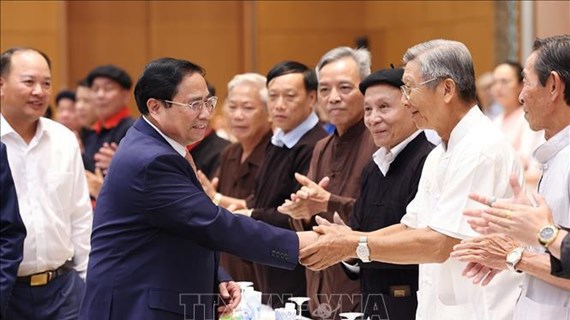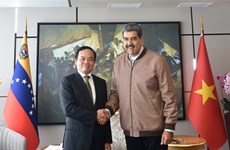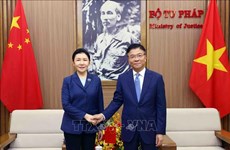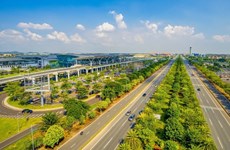Disbursement progress of foreign capital raises alarm: Finance Ministe
The Country Director of the Asian Development Bank (ADB) in Vietnam has stated that the country’s capital disbursement rate has slowed down in the past 3 – 4 years.
 Illustrative photo (Source: VNA)
Illustrative photo (Source: VNA)Hanoi (VNA) - The Country Director of the Asian Development Bank (ADB) in Vietnam has stated that the country’s capital disbursement rate has slowed down in the past 3 – 4 years.
Minister of Finance Dinh Tien Dung has described the disbursement of official development assistance (ODA) and preferential foreign loans in Vietnam as having an ‘alarming’ rate.
The concern was raised at an online conference on speeding up the disbursement of ODA and preferential foreign loans in 2019 that took place on June 26.
Disbursement progress at snail’s pace
Truong Hung Long, Head of the Department of Debt Management and External Finance under the Ministry of Finance, said accumulated foreign capital disbursements for investment in development reached only 2.05 trillion VND in the first half of 2019, just 3.42 percent of the figure assigned by the National Assembly (NA).
During the period, local authorities’ re-loans amounted to about 216 billion VND, or 1.26 percent of the NA plan. The figures for State-owned enterprises and public units were 7.664 trillion VND and 29.22 percent.
“These numbers showed that the January – June disbursement progress was at a snail’s pace,” said Long.
Looking back at these figures, Minister Dung acknowledged the slow progress is alarming.
Eric Sidgwick, Country Director of the Asian Development Bank (ADB) in Vietnam, stated that the nation’s capital disbursement rate was slow in the past 3 – 4 years.
Vietnam's average disbursement rate is currently only half that of the country’s in the previous period and half that of ADB’s other recipients, Sidgwick said, adding this is a major concern.
The delay, according to the ADB official, would cause Vietnam to pay higher commitment costs and affect its reputation in the international arena; not to mention projects would also be affected.
Although the issue does not produce immediate impacts, in the long term, it will take its toll on Vietnam’s economic growth, he warned.
Disbursement period ends, but capital is yet to be allocated
Long explained that the delay to allocated capital in medium-term public investment plans is partly not matching demand. He calculated that there are currently 26 loans worth more than 3.4 billion USD signed since 2016 to date; however, related demand for their disbursement is yet to be included in the medium-term public investment plan for 2016 – 2020.
Long also pointed out that, to date, the Ministry of Planning and Investment has just planned 48 percent of the total sum assigned by the National Assembly. This has left many local ministries and branches with no capital to disburse amid an urgent need for project implementation.
For example, despite being expired, several projects are still allocated capital. They include those on constructing the Hanoi University of Science and Technology, strengthening Thanh Hoa’s provincial health system and a 2008 vocational training programme.
The official proposed the Ministry of Planning and Investment coordinate with relevant ministries and localities to review the medium-term plan for public investment until 2020 to promptly adjust and allocate capital for projects in need.
On the other hand, Long noted in many cases, although a project has been provided with adequate capital, its implementation remains slow. This shows project preparation work has various shortcomings, particularly those related to design consultancy, ground clearance, and resettlement. To clarify, he took the examples of a project on upgrading Highway No 217 using ADB loans and another on provincial health capacity funded by Germany’s KfW Development Bank.
On the donor side, Sidgwick said even a small change to projects such as extending loan due date and changing cost structure also involves the adjustment of investment policy. While waiting for the final adjustment, involved parties cannot begin any preparations and have to suspend payment activities.
Therefore, the ADB representative recommended Vietnam should simplify and reduce the number of administrative steps during its approval process for maximum decentralisation. -VNA













